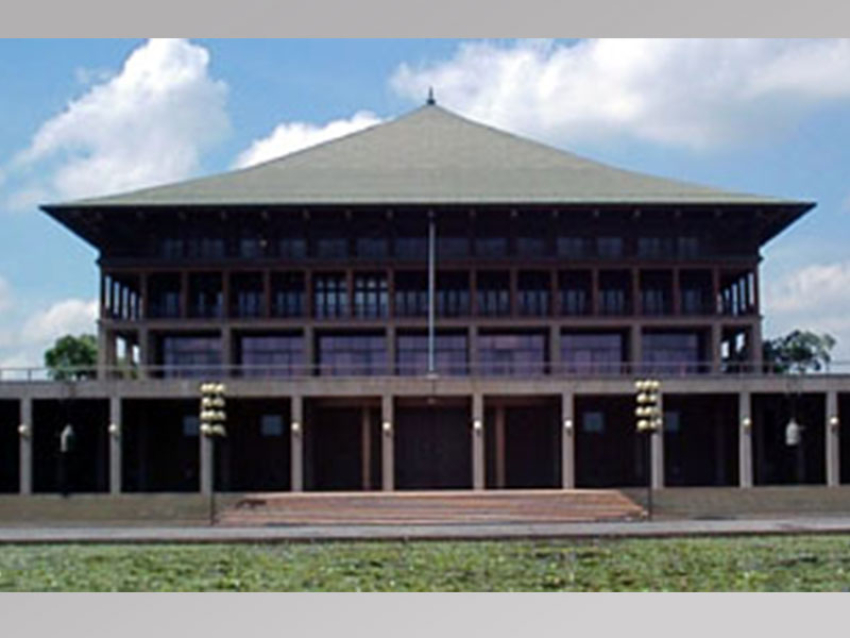Hassan Rouhani said foreign forces had always brought "pain and misery"Iran's president has warned that foreign forces are threatening the security of the Gulf, after the US said it was deploying troops to the region.Hassan Rouhani said foreign forces had always brought "pain and misery" and should not be used in an "arms race".The US is sending more troops to Saudi Arabia after an attack on Saudi oil facilities both nations blame on Iran.Mr Rouhani also said Iran would present a new Gulf peace initiative at the United Nations in the coming days.This year has seen continuing tension between the US and Iran, following President Donald Trump's abandonment of a deal aimed at limiting Iran's nuclear activities in return for the easing of sanctions.
The latest flashpoint was caused by drone and missile attacks on the Saudi oil facilities at Abqaiq and Khurais on 14 September.Yemen's Iran-aligned Houthi rebels said they had carried out the attacks, but both the US and its ally Saudi Arabia - Iran's main regional rival - said Iran was behind them, something Tehran has strongly denied.What has Mr Rouhani said?He was speaking on the anniversary of the start of the 1980-1988 Iran-Iraq war, and alongside a series of military parades in Tehran and other cities."Foreign forces can cause problems and insecurity for our people and for our region," he said in the televised speech.He called the deployment of such forces in the past a "disaster" and told them to "stay away"."If they're sincere, then they should not make our region the site of an arms race... The farther you keep yourselves from our region and our nations, the more security there will be."What about his peace initiative?The president said it would be presented to the UN, which begins the main part of its general assembly in New York on Tuesday.However, he gave no details, saying only that peace in the Strait of Hormuz could be achieved "in co-operation with various countries".
Mr Rouhani said Iran was "ready to let go of the past mistakes" made by regional neighbours."In this sensitive and important historical moment, we announce to our neighbours, that we extend the hand of friendship and brotherhood to them," he said.The Houthi rebels in Yemen have also made a peace initiative, saying they would end all attacks on Saudi Arabia provided the kingdom and its allies did the same.UN Special Envoy for Yemen Martin Griffiths said in a statement it was important to "take advantage of this opportunity and move forward with all necessary steps to reduce violence, military escalation and unhelpful rhetoric".
What is the US troop deployment? The Pentagon announced on Friday that, in response to a Saudi request, there would be a moderate deployment to Saudi Arabia, not in the thousands and focused on air and missile defence.Defence Secretary Mark Esper said: "We will also work to accelerate the delivery of military equipment."The announcement brought a strong response from Iran's Revolutionary Guard Corps - an elite branch of Tehran's military designated a terrorist organisation by the US.Commander Maj Gen Hossein Salami said: "Whoever wants their land to become the main battlefield, go ahead. Be careful, a limited aggression will not remain limited. We will pursue any aggressor."
What was behind the oil attacks?The Houthis have repeatedly said they were behind the oil attacks, the Saudis have repeatedly blamed Iran and Tehran has repeatedly denied any involvement.Media captionSaudi Arabia says the direction of the strikes showed the missiles could not have come from YemenThe attacks had a serious, if not long-term, effect on Saudi oil supplies.The Saudis have displayed what they say is debris from Iranian-made weapons but have not yet released their full findings.The Houthis have launched numerous drone, missile and rocket attacks on the Gulf kingdom.It stems from their conflict with a Saudi-led coalition which launched an air campaign in 2015 against the rebels, who had ousted President Abdrabbuh Mansour Hadi and seized the capital, Sanaa.
Yemen crisis: Why is there a war?The suspicion of Iranian involvement in the oil attacks stems from the more wide-ranging regional rivalry with Saudi Arabia and the antagonism over the abandonment of the nuclear deal.The US has also blamed Iran for attacks on two oil tankers in the Gulf in June and July, as well as on another four in May. Tehran rejected the accusations in both cases.
Why Saudi Arabia and Iran are bitter rivals
By Jonathan Marcus
Saudi Arabia and Iran are at loggerheads. They have long been rivals, but it's all recently got a lot more tense. Here's why.Saudi Arabia and Iran - two powerful neighbours - are locked in a fierce struggle for regional dominance.The decades-old feud between them is exacerbated by religious differences. They each follow one of the two main branches of Islam - Iran is largely Shia Muslim, while Saudi Arabia sees itself as the leading Sunni Muslim power.This religious schism is reflected in the wider map of the Middle East, where other countries have Shia or Sunni majorities, some of whom look towards Iran or Saudi Arabia for support or guidance.Historically Saudi Arabia, a monarchy and home to the birthplace of Islam, saw itself as the leader of the Muslim world. However this was challenged in 1979 by the Islamic revolution in Iran which created a new type of state in the region - a kind of revolutionary theocracy - that had an explicit goal of exporting this model beyond its own borders.In the past 15 years in particular, the differences between Saudi Arabia and Iran have been sharpened by a series of events.The 2003 US-led invasion of Iraq overthrew Saddam Hussein, a Sunni Arab who had been a major Iranian adversary. This removed a crucial military counter-weight to Iran. It opened the way for a Shia-dominated government in Baghdad and Iranian influence in the country has been rising ever since.
Fast-forward to 2011 and uprisings across the Arab world caused political instability throughout the region. Iran and Saudi Arabia exploited these upheavals to expand their influence, notably in Syria, Bahrain and Yemen, further heightening mutual suspicions.Iran's critics say it is intent on establishing itself or its proxies across the region, and achieving control of a land corridor stretching from Iran to the Mediterranean.The strategic rivalry is heating up because Iran is in many ways winning the regional struggle.In Syria, Iranian (and Russian) support for President Bashar al-Assad has enabled his forces to largely rout rebel group groups backed by Saudi Arabia.Saudi Arabia is trying desperately to contain rising Iranian influence while the militaristic adventurism of the kingdom's young and impulsive Crown Prince Mohammed bin Salman - the country's de facto ruler - is exacerbating regional tensions.Media captionFive things about Saudi Arabia's Crown Prince Mohammed bin Salman
He is waging a war against the rebel Houthi movement in neighbouring Yemen, in part to stem perceived Iranian influence there, but after four years this is proving a costly gamble.Iran has denied accusations that it is smuggling weaponry to the Houthis, though successive reports from a panel of UN experts have demonstrated significant assistance for the Houthis from Tehran in terms of both technology and weaponry.Meanwhile in Lebanon, Iran's ally, Shia militia group Hezbollah, leads a politically powerful bloc and controls a huge, heavily armed fighting force. Many observers believe the Saudis forced Lebanese Prime Minister Saad Hariri, whom it backs, to resign in 2017 over Hezbollah's involvement in regional conflicts. He later returned to Lebanon and put the resignation on hold.There are also external forces at play. Saudi Arabia has been emboldened by support from the Trump administration while Israel, which sees Iran as a mortal threat, is in a sense "backing" the Saudi effort to contain Iran.
Israel and Saudi Arabia were the two countries most resolutely opposed to the 2015 international agreement limiting Iran's nuclear programme, insisting that it did not go far enough to roll back any chance of Iran obtaining the bomb.Who are their regional allies?
Broadly speaking the strategic map of the Middle East reflects the Shia-Sunni divide.In the pro-Saudi camp are the other major Sunni actors in the Gulf - the UAE and Bahrain - as well as Egypt and Jordan.In the Iranian camp is Syria's President Bashar al-Assad, a member of a heterodox Shia sect, who has relied on pro-Iranian Shia militia groups, including the Lebanon-based Hezbollah, to fight predominantly Sunni rebel groups.Iran and Saudi Arabia: Their friends and foes Iraq's Shia-dominated government is also a close ally of Iran, though paradoxically it also retains a close relationship with Washington on whom it has depended for help in the struggle against so-called Islamic State.
How is the Saudi-Iranian rivalry being played out?This is in many ways a regional equivalent of the Cold War, which pitted the US against the Soviet Union in a tense military standoff for many years.Iran and Saudi Arabia are not directly fighting but they are engaged in a variety of proxy wars (conflicts where they support rival sides and militias) around the region.Yemen is one of a number of battlegrounds fuelling Iranian-Saudi tensions
Syria is an obvious example, while in Yemen Saudi Arabia has accused Iran of supplying ballistic missiles fired at Saudi territory by the rebel Houthi movement.Iran is also accused of flexing its muscle in the strategic waterways of the Gulf, through which oil is shipped from Saudi Arabia. The US says Iran was behind recent attacks on foreign tankers there - something it denies. re we heading towards a direct war between Saudi Arabia and Iran?So far Tehran and Riyadh have fought via proxies. Neither is really geared up for a direct war with the other but a major Houthi attack against the Saudi capital or, as in the most recent case, against a key economic target could upset the apple cart.
US says data shows Iran behind Saudi oil attacksHouthi attacks against Saudi Arabia's infrastructure have inevitably added a new front to the confrontation between Tehran and Riyadh. As in the Gulf, where Iran and Saudi face each other across a maritime border, rising tensions could risk a much broader conflict.Media captionWill Saudi Arabia go to war with Iran?For the US and other Western powers, freedom of navigation in the Gulf is essential and any conflict that sought to block the waterway - vital for international shipping and oil transportation - could easily draw in US naval and air forces.For a long time the US and its allies have seen Iran as a destabilising force in the Middle East. The Saudi leadership increasingly sees Iran as an existential threat and the crown prince seems willing to take whatever action he sees necessary, wherever he deems it necessary, to confront Tehran's rising influence.Saudi Arabia's vulnerability has been demonstrated by these latest attacks on its oil installations. If a war breaks out, it will be more perhaps by accident rather than design. But the Saudis' own activism, encouraged in part by a lingering uncertainty as to the Trump administration's own goals in the region, inevitably adds another element of tension
Saudi oil attacks: Who's using drones in the Middle East?
By Jonathan Marcus
The attacks on Saudi oil installations have led to speculation that armed drones were involved.Both the United States and the Saudi authorities say this may well have been the case.The offensive use of drones or unmanned aerial vehicles (UAVs) has grown significantly in recent years, and nowhere more so than in the Middle East.So who has them and who has used them in combat?The first combat use of an armed drone came in October 2001, on the first night of the Afghan War against a Taliban convoy.China has become a major exporter of drones to the Middle EastArmed UAVs were initially the preserve of a few technologically advanced nations, with Israel and the United States very much in the lead.Soon a new provider came onto the scene - China, eager to sell its weaponry around the world.The Chinese have boosted the spread of military drones in the Middle East, selling weaponry to at least half a dozen governments.The civilian UAV market has also become more sophisticated, and the technology has been converted into combat drones.While the technology might not be cutting edge, highly capable UAVs can be manufactured by any country with a reasonable industrial base - Iran being a good case in point.And Iran has played a key role in transferring relatively advanced drone technology to several non-state actors, such as the Houthi rebels in Yemen.
Drone explodes above a podium where officials were watching a military parade at al-Anad base in Yemen.The Middle East is one of the epicentres of the war on terror. It has drawn in technologically advanced players like the United States, Britain and Russia.There is a host of regional rivalries. The most pronounced fault-line is between Israel and the Gulf Arab states on the one hand, and Iran, its allies and proxies like Hezbollah and the Houthis, on the other.The US has used armed drones extensively in the Middle East, as part of its campaigns against both al-Qaeda and so-called Islamic State (IS).Weapons such as Predator and Reaper drones have been used against targets in Syria, Iraq, Libya and Yemen.The MQ-9 Reaper is a larger, heavier and more capable aircraft than the Predator, capable of carrying a significantly larger weapons payload with a much longer range.As one of Washington's closest military allies, Britain purchased a number of Reaper systems from the US, and has operated them extensively against targets in both Iraq and Syria.
Long-acknowledged as one of the pioneers in UAV technology, Israel is one of the major exporters of unarmed UAVs, accounting for - according to one 2018 study - about 60% of the global market.Among others customers, it has sold surveillance drones to Russia, and has even shot at least one down when it crossed into Israeli territory from Syria.Israel uses a varied fleet of UAVs for intelligence gathering, surveillance and attack missions.Its armed drones include the Heron TP, the Hermes 450 and the Hermes 900.But Israel has been reluctant to export these armed drones.
Despite the arms embargo and sanctions, Iran has developed a capacity to build reasonably sophisticated armed UAVs.The Shahed-129 was unveiled in 2012 and has been used to hit IS and targets in Syria and Iraq. The Mohajer 6 has been in production since 2018.But the other aspect of Iran's drone programme is its willingness to sell or transfer its technology to its allies and proxies in the region.Other countries
The United Arab Emirates (UAE) has deployed a fleet of Chinese-supplied Wing Loong 1 UAVs, which have been used against targets in Yemen and in the civil war in Libya.The UAE backs the faction led by General Haftar. Turkish drones have been used in Libya in support of the Government of National Accord.Unable to buy American UAVs, Turkey builds its own, which have been used in strikes against Kurdish targets both inside Turkey and in Syria.Iraq, Jordan, Saudi Arabia, Egypt and Algeria have all purchased Chinese UAVs.
The US has accused Iran of supplying Houthi rebels with UAVsHouthi rebels are among the most adept UAV users among the non-state actors. They operate a number of systems which, according to UN and other experts, depend heavily on Iranian technology. The Houthis have used the Qasef-1, which a UN panel of experts has determined is virtually identical to an Iranian model.These are effectively "kamikaze" drones that are deliberately crashed into their targets. A subsequent UN report highlighted the Houthis' use of a more sophisticated UAV-X drone, sometimes referred to as the Samad-2/3, which is believed to have a small explosive warhead.Lebanese Shia Muslim militant group Hezbollah has operated a small number of what appear to be Iranian-supplied drones.The war in Syria saw the first significant use of drones in a major swarm attack intended to overwhelm air defences. Rebel forces have directed several drones at major Russian military bases in Syria.
Paradoxically, US reluctance to sell advanced UAVs to its allies has not removed the possibility of drone proliferation, because China has stepped in to market its broadly equivalent technology.Using UAVs to strike at targets has helped to open up a new kind of combat, blurring the line between war and peace.UAVs have offered the potential to strike precise targets with limited side-effects (at least if the intelligence guiding them is right).The armed drone or UAV seemed tailor-made for the so-called war against terror. But it was also tailor-made for the sorts of unequal struggles in the region between technologically advanced and far less advanced players.




















